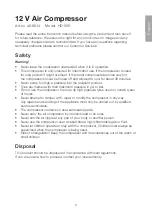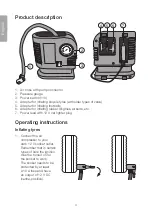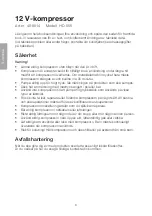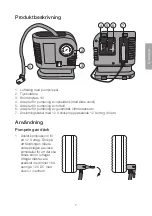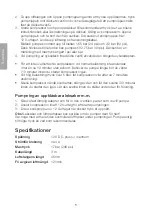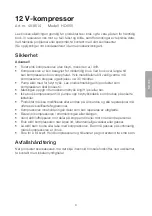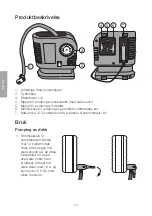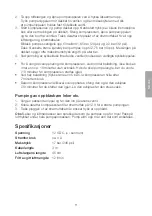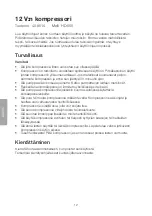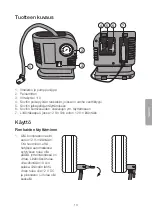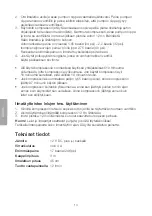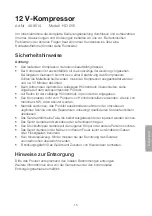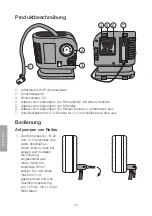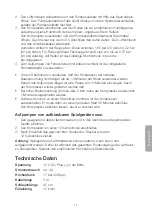
5
English
2. Open the pump connector on the air hose by lifting the locking lever. Press
the pump connector onto the valve of the tyre and lock it in place by lowering
the locking lever.
3. Turn the compressor on and inflate the tyre to the recommended pressure
(refer to the car’s handbook or marking on the tyre itself). Turn the compressor
off, open the pump connector and remove it from the valve of the tyre. Unplug
the compressor from the car’s 12 V socket. Coil up the air hose and the power lead.
Car tyres should normally be inflated to pressures ranging from 1.65 bar (24 psi)
to 2.2 bar (32 psi). Tyres for large vehicles might need a pressure up to
2.75 bar (40 psi). Tyres are marked with their maximum pressure in psi or bar.
4. The included bicycle adapter should be used for inflating bicycle tyres with
older types of valves.
• To avoid overheating, under normal load the compressor should not be used
continuously for more than 10 minutes at a time. If you need to inflate for longer
you should wait for 10 minutes before starting the compressor again.
• For heavy loads (pressure over 5 bar), let the compressor rest after 7 minutes use.
• If the compressor still overheats, shut it off and let it cool for 30 minutes before you
start it again. Let the compressor cool down before putting it away for storage.
Inflating inflatable toys, etc.
1. Choose a suitable adapter nozzle or pump needle and insert it into the valve of
the object which you wish to inflate.
2. Attach the compressor to the 12 V socket to start the inflation.
3. Unplug the 12 V plug when the desired pressure has been reached.
Note:
Toys and airbeds can burst if you over-inflate them! Be careful and always check
the pressure of the object during the inflation. Never inflate an object to a higher
pressure than the one which is recommended.
Specifications
Voltage
12 V DC, (centre-positive)
Current draw
Approx. 4 A
Max pressure
17 bar (246 psi)
Cable length
3 m
Air hose length
45 cm
Free air displacement
12 l/min



